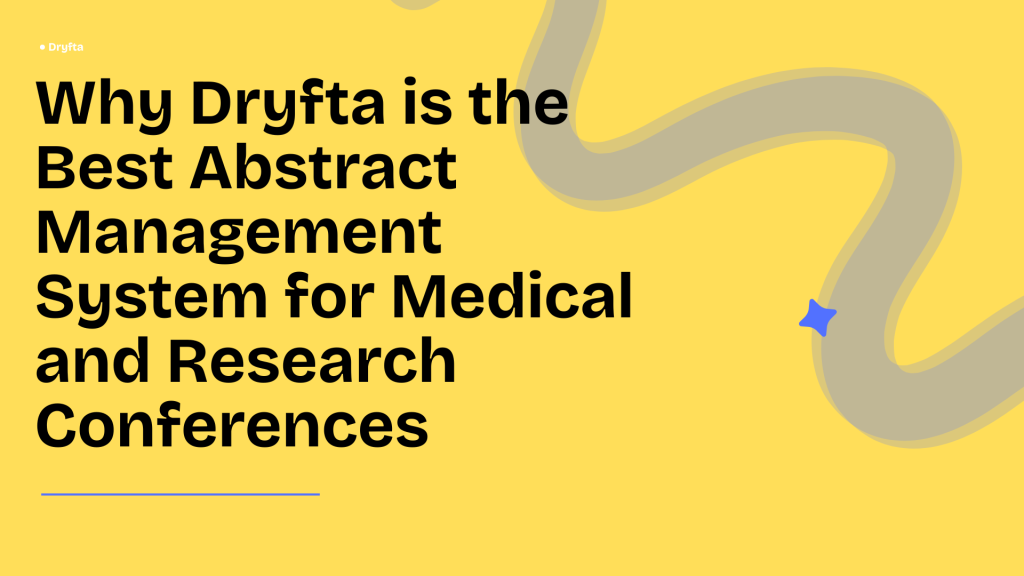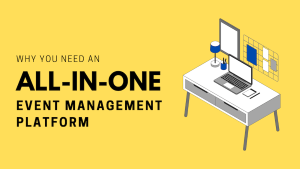
Organizing a medical or research conference is no small task. Coordinating speakers, managing registrations, arranging schedules, and handling logistics can quickly overwhelm organizers. As a result, there’s often little time left for what truly matters: the research itself. At the heart of any academic or scientific gathering lies the abstract submission and review process, the moment when researchers share their findings and conference organizers curate the sessions that will define the event.
This process, however, has historically been a nightmare of email chains, scattered spreadsheets, and manual tracking. In fact, anyone who has been on the organizing side knows the frustration of submissions arriving in different formats, deadlines slipping through the cracks, or reviewers struggling to stay updated.
That’s why the right abstract management system is crucial. It doesn’t just collect papers. It also streamlines reviews, ensures fairness, and saves organizers from endless emails and spreadsheets. Among the many tools available today, Dryfta stands out as a complete solution built with the unique needs of academic and scientific events in mind.
Why Abstract Management Is the Backbone of Medical & Research Conferences
Unlike general events, research and medical conferences thrive on intellectual contributions. The abstracts are not just proposals but they are the seeds of groundbreaking discussions, policy debates, and even future collaborations. A poorly managed submission process can lead to confusion, bias, and even reputational damage for the conference.
For medical conferences in particular, accuracy and fairness are non-negotiable. Each abstract may represent years of work, significant clinical insights, or findings that can influence healthcare practices. When researchers entrust a platform with their work, they expect a secure, transparent, and efficient process.
That’s why an abstract management system must do more than just collect files. It needs to:
-
- Allow easy submission for authors.
- Provide structured review workflows for committees.
- Ensure blind or double-blind peer reviews where required.
- Offer flexibility for multi-track events.
- Keep all communication and deadlines organized.
- Guarantee data security and compliance.
Dryfta was built around the real-world challenges of medical and research conferences. It gives organizers a reliable system that safeguards academic integrity while cutting down on the countless hours usually lost to admin work.
What to Look For in the Best Abstract Management System
When evaluating abstract management systems, organizers should look beyond flashy dashboards or claims of “AI-powered efficiency.” The true value lies in how the platform fits the unique workflow of a research-heavy event. Here are the key aspects that matter:
1. Ease of Submission
Researchers are busy. Many are clinicians, professors, or graduate students juggling multiple responsibilities. Therefore, an abstract submission form should not feel like an obstacle course. The best systems provide a simple, intuitive interface where authors can easily upload abstracts, specify keywords, select tracks, and confirm co-authorship.
Dryfta’s form builder stands out here. It allows organizers to create custom submission forms without technical expertise. Need to collect conflict-of-interest disclosures or specific formatting? It’s all possible with drag-and-drop flexibility.
2. Peer Review Workflows
The credibility of a conference depends on a transparent review process. Medical associations often require blind or double-blind peer review to ensure fairness. Reviewers should be able to log in, access assigned abstracts, score them based on custom rubrics, and leave feedback.
Dryfta’s double and triple blind review system supports multiple types of evaluations like scoring, grading, qualitative feedback, and can handle multi-round reviews if needed. Organizers can even automate reviewer assignments based on expertise or track.
3. Multi-Track and Multi-Event Capability
Large conferences often host parallel sessions, workshops, or symposia. A one-size-fits-all approach won’t work. The system must be flexible enough to manage abstracts across multiple tracks, while still giving organizers a bird’s-eye view.
Dryfta allows administrators to create different tracks, deadlines, and reviewer groups, all within one unified platform.
4. Automated Communication
If you’ve ever been an author waiting to hear back about your abstract, you know the agony of silence. Conference organizers often get swamped, leading to delayed updates. An ideal abstract management system automates these touchpoints: submission confirmations, reviewer reminders, acceptance or rejection notifications.
Dryfta’s built-in email automation makes this seamless. Organizers can customize templates, schedule reminders, and ensure no participant is left guessing.
5. Security & Compliance
Medical and research data, even when anonymized, must be handled with care. With rising concerns over privacy, GDPR, and data leaks, conferences cannot risk using insecure platforms.
Dryfta emphasizes data security, with encrypted workflows and strict access controls. Organizers can be confident that sensitive submissions remain confidential.
6. Integration with the Conference Ecosystem
Abstract management is only the beginning. After selection comes scheduling, publishing, and presentation. A strong system should integrate smoothly with registration, attendee engagement, and even mobile apps.
Dryfta excels here because it is not just an abstract management tool, it’s a complete event management platform. From registration to virtual sessions, everything is connected.
Why Medical and Research Conferences Have Special Needs
It’s important to highlight that not all abstract management systems are suitable for medical and research communities. These conferences have nuances that general event platforms often miss:
- Rigorous peer review requirements.
- Ethical considerations, such as conflict-of-interest declarations.
- High submission volumes, often in the thousands.
- International participation, requiring multi-language support.
- Publication-ready exports, since abstracts often end up in proceedings or journals.
Dryfta’s system was built with these realities in mind. Its abstract-to-proceedings pipeline allows organizers to export selected abstracts directly into formatted collections, reducing manual work. The platform also supports global events with multilingual capabilities.
How Dryfta Simplifies the Workflow
Imagine opening submissions for your conference and knowing everything will run smoothly. With Dryfta, the workflow becomes almost effortless. Here’s how the workflow unfolds with Dryfta:
- Launch the Call for Papers – Create custom submission forms in minutes. It collects all the details you need, from abstracts and keywords to conflict-of-interest disclosures.
- Receive Submissions – Researchers submit their work through a consistent, easy-to-use interface. No more messy attachments or missing fields.
- Assign Reviewers – Abstracts are automatically routed to the right experts, and reviewers can score, comment, and provide feedback online.
- Handle Multi-Round Reviews – Borderline abstracts can go through additional review rounds. The deadlines and reminders are managed automatically.
- Notify Authors & Compile Proceedings – Decisions are sent promptly, and accepted abstracts can be exported directly into formatted proceedings.
This integrated process saves organizers countless hours while keeping the rigor and fairness that every conference demands.
Why Organizers and Researchers Prefer It
Tools are only as good as the experience they create. Dryfta is often praised not just for its features but for its ease of use. Organizers with no technical background find it simple to configure, while researchers appreciate the intuitive submission interface.
Moreover, because Dryfta is a secure and trusted platform used by institutions like Johns Hopkins University and Intel, it carries credibility. That matters when convincing skeptical researchers to submit their life’s work.
Future of Abstract Management in Research Conferences
Looking ahead, abstract management will keep evolving. Features like AI-assisted reviewer matching, plagiarism detection, and analytics will become more important. Still, one thing remains unchanged: the need for a system that is fair, simple, and secure.
Medical and research conferences cannot afford to gamble with tools that are clunky, insecure, or overly complex. They need a reliable partner. In many ways, Dryfta has already set the standard by combining abstract management with full-scale event management, making it one of the most future-ready solutions out there.
What This Means for You as The Conference Organizer
The best abstract management system for medical and research conferences is not just one that collects submissions. It is a system that respects the academic process, ensures fairness, secures sensitive data, and integrates seamlessly into the broader conference workflow.
Dryfta goes beyond meeting the basics- it offers organizers everything from secure submissions to integrated scheduling in one connected platform. From customizable submission forms to robust peer review tools, from secure data handling to event-wide integration, it gives organizers everything they need in one place.
For conferences that want to elevate their reputation, reduce stress, and provide a smooth experience for researchers, Dryfta is not just an option- it’s the solution.




